Gynybos linija su 21 kulkosvaidžių bunkeriu (Sarve-Lehtma)
Įtvirtinimas

Gelžbetoniniai kulkosvaidžių bunkeriai buvo pastatyti 1941 m. Estų kalboje vartojamas žodis „dott“ yra sovietinės armijos termino „ДОТ“ (долговременная огневая точка) adaptacija, pažodžiui verčiama kaip nuolatinės ugnies taškas. Tai uždara gynybinė konstrukcija, pastatyta iš akmens, betono, šarvuotų čerpių ir kt.
Sarvės-Lehtmos gynybos linijoje nebuvo daug karinių veiksmų, nes priešas atvyko iš netikėtos krypties. Gynybos linija buvo pastatyta rytinėje ir šiaurinėje Hyjumaa pakrantėse, tačiau vokiečių desantas pietinėje pakrantėje pasirodė 1941 m. spalį. Sarvės-Lehtmos gynybos linijos kulkosvaidžių bunkeriai yra tokio paties tipo sunkiųjų kulkosvaidžių pozicijos, skirtos 2–3 pabūklininkams. Yra keletas nedidelių skirtumų (ambrazūrų skaičius, prieškambario forma ir vieta ir kt.). Šie statiniai buvo pastatyti skubotai, naudojant karo sąlygomis turimas medžiagas, todėl statybų kokybė skyrėsi.
Šiandien bunkeriai beveik neatlieka jokios funkcijos. Heltermoje vienas iš bunkerių naudojamas kaip rūsys, o Sääre kyšulyje – kaip RMK (Valstybinio miškų valdymo centro) apžvalgos aikštelės pagrindas. Gelžbetonio būklė patenkinama, trūksta metalinių langinių ir ambrazūrų durų. Kai kurie bunkeriai yra miške taip smarkiai apaugusiame, kad jų neįmanoma pastebėti.
Hyjuma saloje yra beveik 50 kulkosvaidžių bunkerių, tačiau tik čia jie sudaro stabilią ilgą gynybos liniją. Dauguma jų yra aplink pakrantės baterijas. 1970 m. pasieniečiai įrengė tris SPS-3 kulkosvaidžių bunkerius iš surenkamųjų gelžbetonio plokščių, vienas iš jų (iš Suursadamos pozicijos) buvo išsiųstas į Hyjuma karo muziejų.




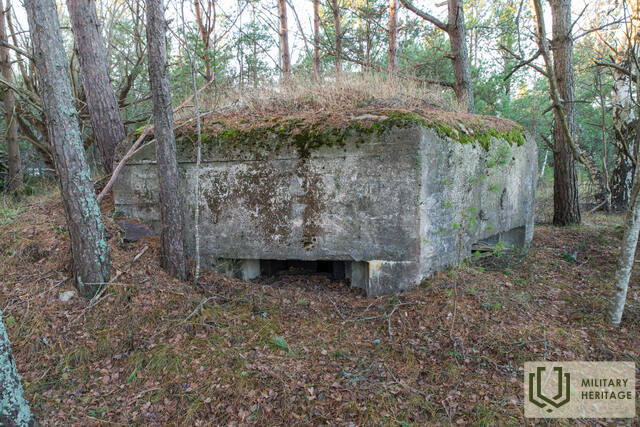
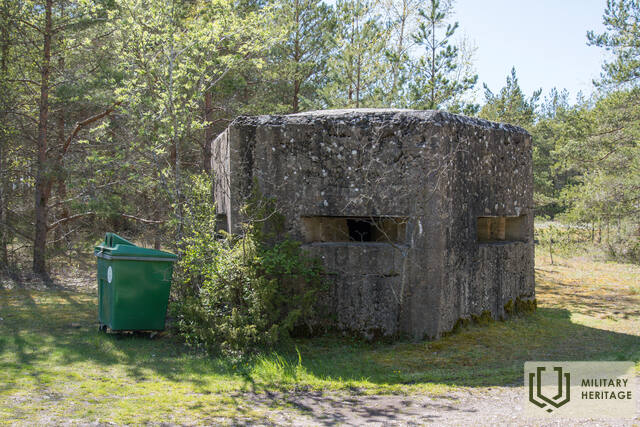
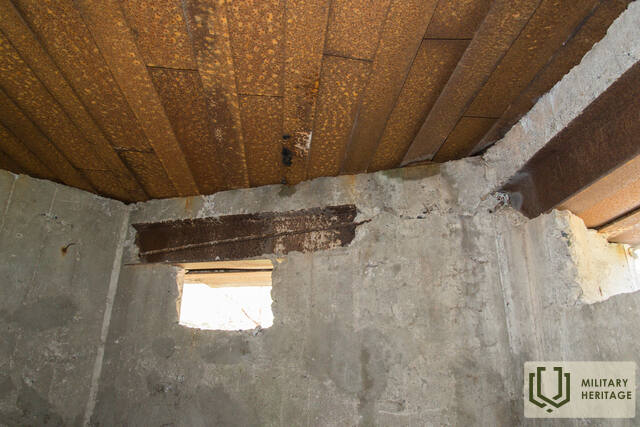
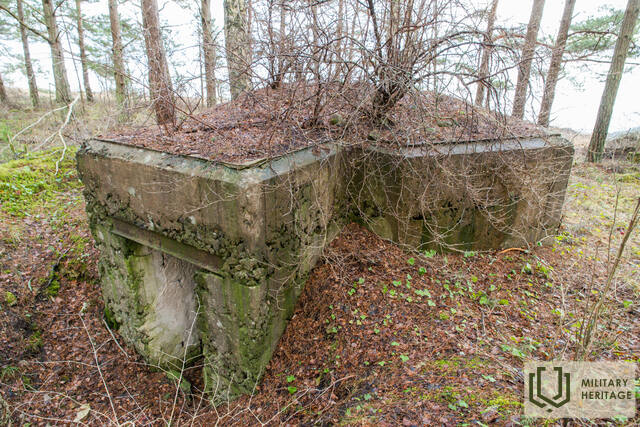
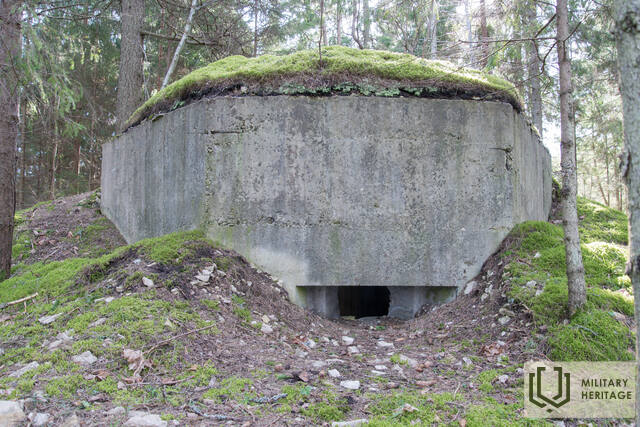
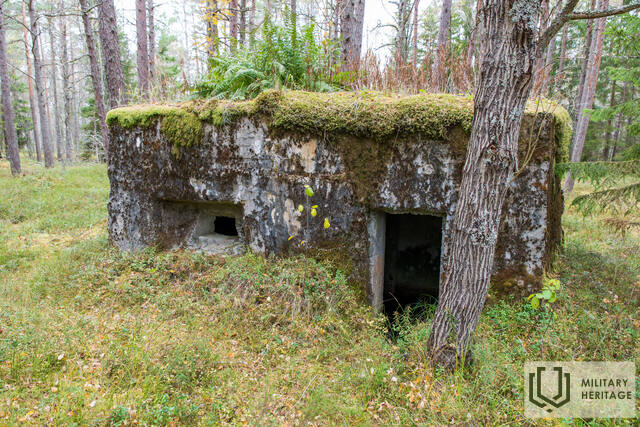
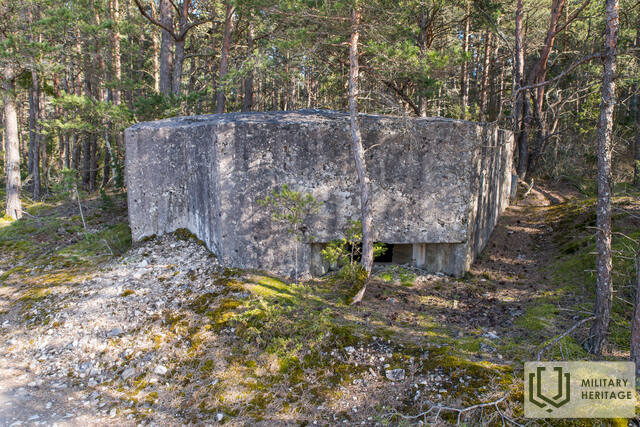
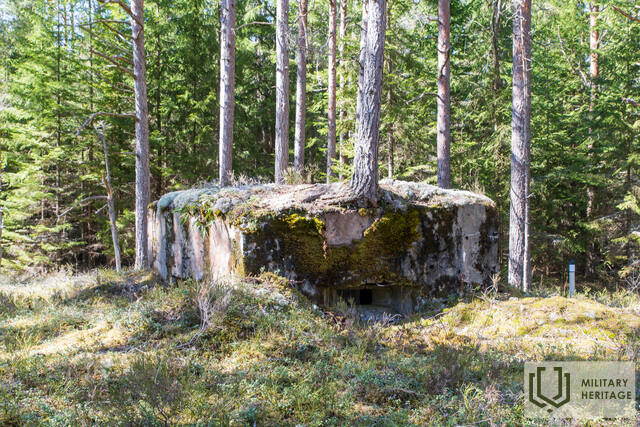
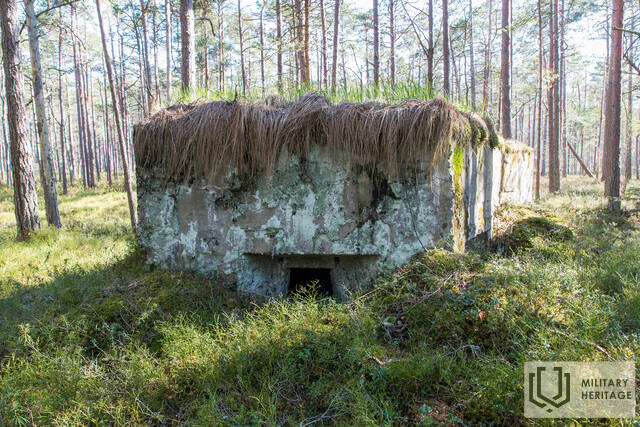
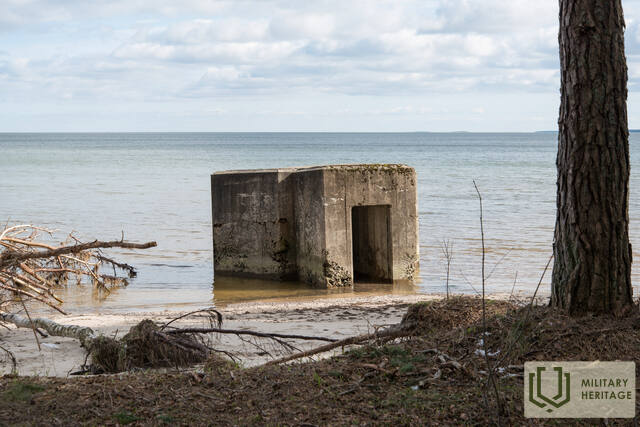








Labas rytas, tai nėra tinkamas adresas reaguoti į jūsų svetainės turinį, bet karinio paveldo turizmo meniu nepalieka kito pasirinkimo, kaip tik šį. Mano pastaba apskritai yra įspėjimas, neištrinkite per daug savo matomos istorijos. Ką tik buvau Tekselyje, Nyderlandų saloje, kurioje 1945 m. buvo 26 dideli 625 tipo kazematai ir daug antraeilių objektų, tokių kaip virtuvės, sandėliukai ir gyvenamosios patalpos. Ir dauguma jų buvo ištrintos arba uždengtos ir užpiltos smėliu, ko nematai, gali pamiršti. Ką tik apžiūrėjau ir pridėjau 49 dengtus antrinius objektus OSM. Juos atpažino iš nenatūralių kalvų lygiame miške, jų kamufliažas puikiai tiko žolės, paparčio ir gervuogių ar žiobrių užauga. Kai kurios stogų viršūnės buvo matomos dėl vandalizmo, negalima išeiti iš pėsčiųjų takų, kad būtų galima klaidžioti po miško paklotę. Tačiau kaip ir T34, kuris buvo nuimtas nuo stovo, niekada jo nesugrąžinsite, kad pritrauktumėte lankytojų. Tiesiog papasakokite visą istoriją su pakilimais ir nuosmukiais, o norėdami tai iliustruoti, net ir šiais laikais turėsite kovoti ar kovoti už savo laisvę. Vokiečiai netgi naudojo ir pakeitė savo reikmėms olandų stebėjimo aikštelę. Tai sukuria dvigubą istoriją viename objekte.